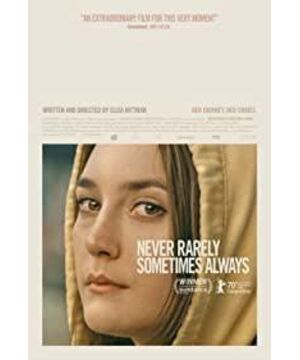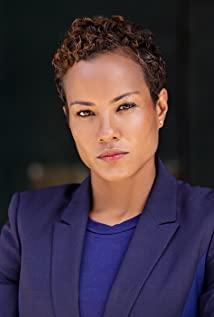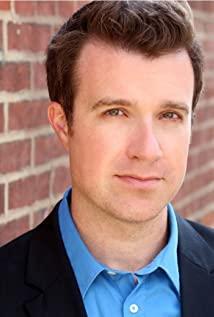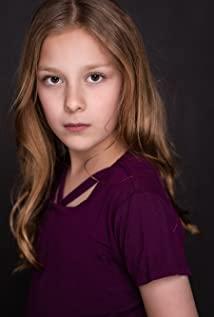The movie "Never, Rarely, Sometimes, Always" tells the story of the abortion of a seventeen-year-old girl, which is a youth family movie.
The description of the family is always a brushstroke by the author. However, this one is often the symptom of a problem, which is particularly important. Such youth-themed films are not uncommon, and many directors start from their families as the basis for their stories, such as "Dog Thirteen", which has been popular in recent years, and director Hu Bo's posthumous works "The Elephant Sitting on the Floor" and "The Elephant Sitting on the Floor" Some films that show youth, such as "Over the Spring" and "Youth as a Teenager", show what kind of flavor they inevitably show in the family environment. This can directly or indirectly produce a commonality for everyone. Different eras The same is true. It can be seen that the new wave masterpiece "Four Hundred Strikes" shows that directors of different eras and types describe the environment of youth first from the family, which is a commonality.
In the film "Never, Rarely, Sometimes, Always" the director regards the family as a very important but hidden foundation. The family environment presented in the film is the heroine and two sisters, mother and stepfather. However, the fact that the majority of women in the family does not affect the father's respect for women. The father's disrespect for the image of women is a very clever way of showing the family environment. And the mother's image is too accommodating to talk about her tolerance because she also resisted her father's behavior, but the father did not repent at all - the mother told the father not to swear. The two younger sisters in the family are different in age from the heroine, and such a family environment has led to the heroine's withdrawn character. Only a cousin who is not much different in age from himself became the object of his daring to talk about. This kind of character setting has a lot to do with the subsequent plot direction.
The social environment, it can also be said that the story background and the social background are also indispensable, but there is resistance to these environments. In a small town, the subject of abortion became an original sin and was unacceptable.
The first scene of the movie shows us the school environment the heroine is in. She is called a "slut" and no one stops her, and she even gets ridiculed by her father when she steps down. The first resistance she does is to splash water.
What you can see again is the part-time environment of the heroine. Every time she gets off work, she has to be given a special farewell by her boss - kissing the hand she handed in. However, regarding the boss's behavior and verbal harassment, the heroine and cousin chose to remain silent. For the cleaning of the ledger on the last day, the cousin took money from it. Despite the surveillance, the heroine chose to remain silent. This is the second resistance in the film.
One of the biggest presentations of the social environment is the subject of the film—underage abortion. Different countries have different systems and cultures. For example, abortion can be clearly seen above. The video about the town doctor asking the heroine to watch an abortion (mainly persuasion) and the people marching on the street are all psychological obstacles to the heroine's abortion in the film, and the most important thing is to find an institution and wait for time hindrance. The heroine was shaken again, but in the end, neither the lack of funds nor the appearance of any problems interrupted her thoughts.
The heroine presented in the film is strong and forbearing, and the only time in the whole film is crying to cause a bright spot. The sarcasm of classmates, the sarcasm of the father, and the harassment of the boss did not defeat the strong heroine. Instead, it was the doctor's question before the operation, which made the heroine cry. At this time, he also named the title of the film "Never, Rarely, Sometimes, Always". These four words run through the whole process of the girl from having sex at the age of 14 to the abortion. There is a similar scene in the movie "Blue Valentine", but in "Never Rare Sometimes Always", the director's arrangement of this scene is not an ordinary question, but a kind of self-examination, and Facing yourself is a very difficult process. You can oppose the evaluation of others, but self-criticism is a process of boiling a frog in warm water. For a hidden character in the movie - the child's father. The director's failure to present is like the role of the master in Zhang Yimou's film "The Red Lantern". We can say that his role is a system and a society. There are advantages and disadvantages to this approach. , the advantage is that it saves space for the audience and grasps the main part, but the disadvantage is that if it is not handled well, it will appear to be lacking. As for what is presented in the film, it depends on personal subjective feelings.
Finally, to name the title, why do you say this is a movie with the correct feminist thinking in general? Because of her nature, she has the "suspect" of examining and criticizing the system, which is like what I said above can make the audience think and examine what is happening at the moment. From a woman's point of view, it is good to reflect the current reality of the abuse of abortion and the bad things that women suffer. Instead of just going to mindless appeals.
View more about Never Rarely Sometimes Always reviews











